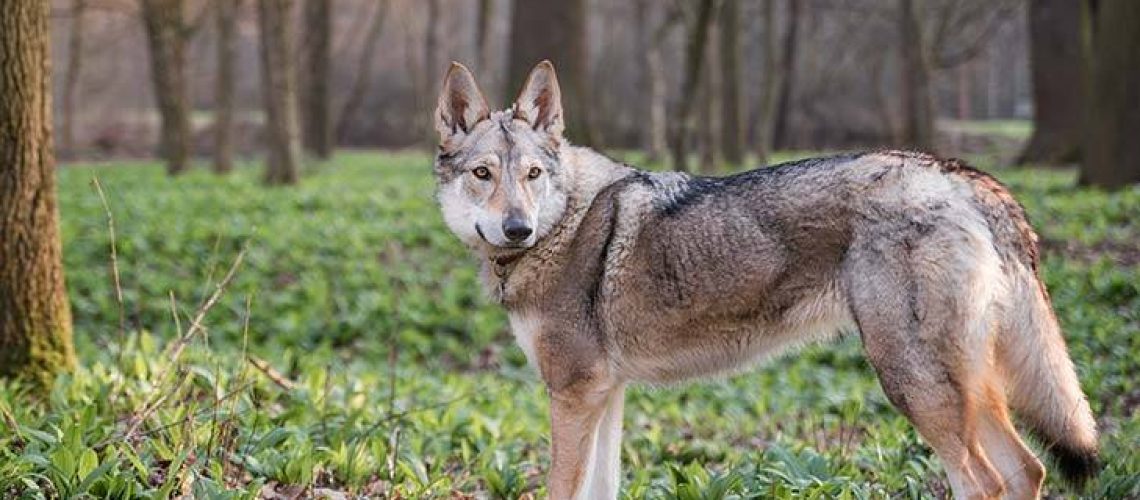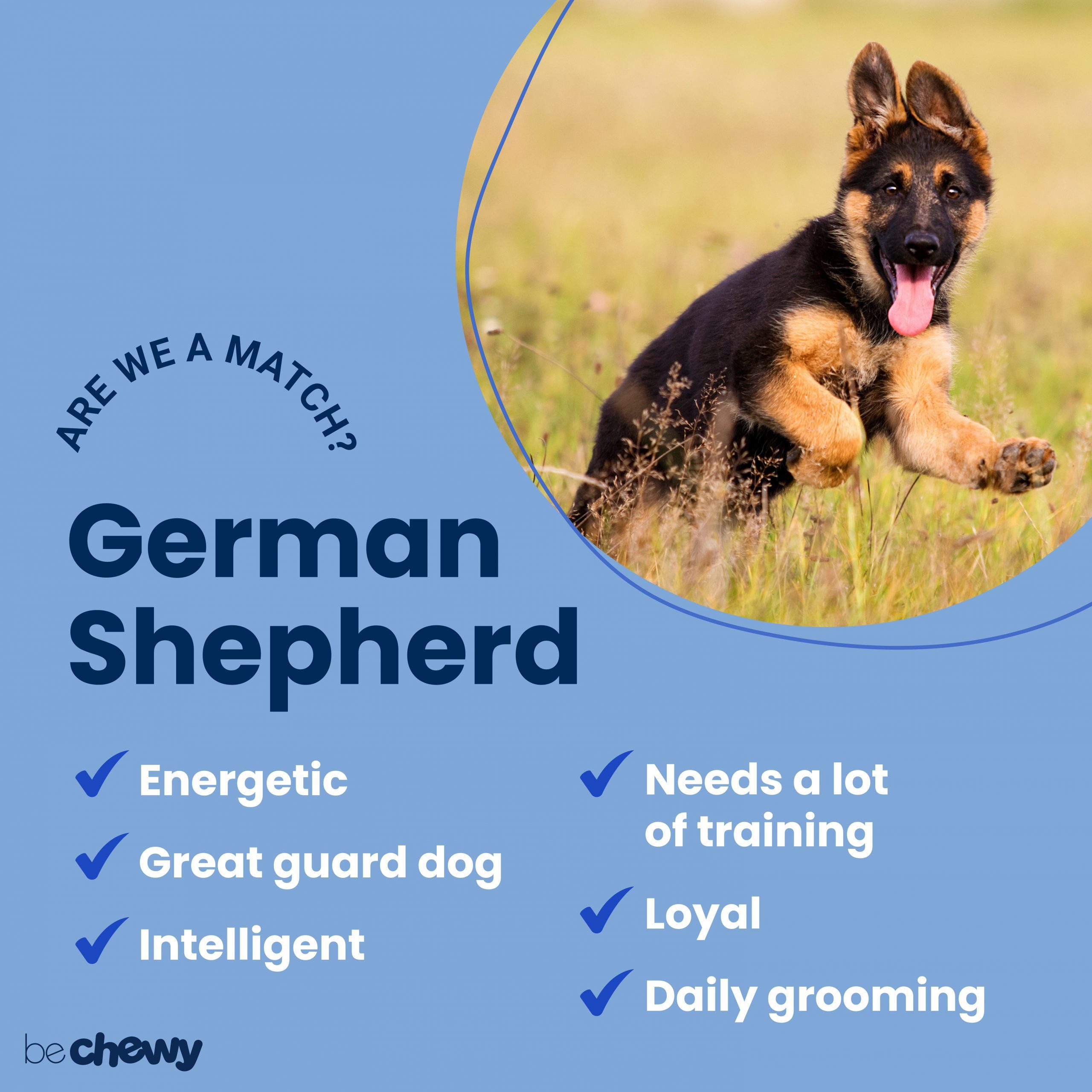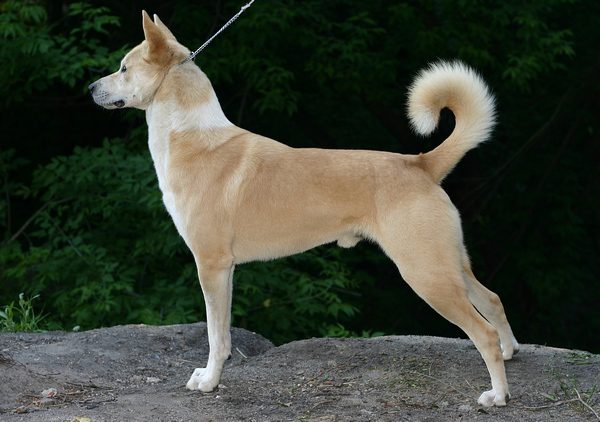Key Takeaways:
- Czechoslovakian Vlcaks are a relatively new breed, created by breeding German Shepherds with Carpathian wolves in the 1950s.
- These dogs have a strong prey drive and require extensive socialization and training from an early age to prevent behavioral issues.
- Czechoslovakian Vlcaks are highly active and need plenty of mental and physical exercise to stay happy and healthy.
- They have a thick double coat that requires regular brushing to prevent matting and keep their skin healthy.
- Due to their high intelligence and independent nature, Czechoslovakian Vlcaks are not recommended for first-time dog owners.
Are you a dog lover? Have you ever heard of the Czechoslovakian Vlcak, also known as the Czechoslovakian Wolfdog? If not, get ready to embark on an exciting journey into the world of this unique and fascinating breed. Understanding the characteristics and care requirements of the Czechoslovakian Vlcak can bring immense value to your life as a dog owner. Not only will you gain insight into their wolf-like appearance and behavior, but you'll also learn how to provide them with the best possible care. Whether you're considering adding one to your family or simply curious about these magnificent creatures, this topic is essential for anyone interested in dogs. So let's dive in and explore the captivating world of the Czechoslovakian Vlcak together!
Main Characteristics of the Czechoslovakian Vlcak
The Czechoslovakian Vlcak, also known as the Czechoslovakian Wolfdog, is a unique breed that combines the characteristics of a domestic dog and a wolf. These dogs have a strong and muscular build, with a body that is slightly longer than it is tall. They have erect ears, almond-shaped eyes, and a thick double coat that provides insulation in different weather conditions.
One of the most distinctive features of the Czechoslovakian Vlcak is its wolf-like appearance. They have a strong resemblance to wolves due to their facial structure, long muzzle, and intense gaze. Their coat colors range from yellowish-gray to silver-gray or even pure white. This breed also has a bushy tail that curls over their back when they are alert or excited.
Wolf-Like Appearance
The Czechoslovakian Vlcak closely resembles its wild ancestor, the Carpathian Wolf. This breed was initially developed by crossing German Shepherds with Carpathian Wolves in the mid-20th century. The goal was to create a dog with high trainability and working abilities similar to German Shepherds but with the stamina and resilience of wolves.
The physical characteristics of the Czechoslovakian Vlcak contribute to its wolf-like appearance. Their deep-set eyes give them an intense gaze, while their erect ears enhance their alertness. The overall body structure, including their lean muscles and agile movements, further accentuates their similarity to wolves.
Resemblance to Wild Wolves
- Erect ears
- Almond-shaped eyes
- Bushy tail curled over back
- Muscular build
- Long muzzle
- Intense gaze
Suitability of Czechoslovakian Vlcaks as Family Pets
Czechoslovakian Vlcaks are not your typical family pets. While they can form strong bonds with their human families, they have a strong and independent nature that requires experienced owners who understand their unique needs. These dogs have high energy levels and require plenty of physical and mental stimulation to thrive.
Due to their wolf heritage, Czechoslovakian Vlcaks have a strong prey drive and may not get along well with small animals or pets they perceive as prey. They also have a natural instinct to roam, so it is essential to provide them with secure fencing and supervised outdoor time. Early socialization and training are crucial for ensuring they grow up to be well-behaved members of the family.
Experienced Ownership Required
The Czechoslovakian Vlcak is not recommended for first-time dog owners or households with young children. Their wolf-like traits make them more challenging to train and handle compared to other breeds. Experienced owners who can provide consistent leadership, structure, and positive reinforcement training methods are better suited for this breed.
Suitable Owners:
- Experienced dog owners
- Active individuals or families
- No small animals or prey-like pets in the household
- No young children in the household
Exercise and Mental Stimulation for a Czechoslovakian Vlcak
Czechoslovakian Vlcaks are highly active dogs that require ample exercise and mental stimulation to prevent boredom and destructive behaviors. Daily exercise should include long walks, jogging, or engaging in activities such as agility training, obedience trials, or scent work.
Mental stimulation is equally important for this breed. They excel in tasks that challenge their problem-solving abilities and provide a sense of purpose. Puzzle toys, interactive games, and obedience training sessions can help keep their minds sharp and fulfill their need for mental engagement.
Exercise Recommendations
Czechoslovakian Vlcaks require at least 1-2 hours of exercise each day to meet their physical needs. This can be broken down into multiple sessions to ensure they receive adequate mental and physical stimulation throughout the day.
Recommended Activities:
- Long walks or hikes
- Jogging or running alongside a bicycle
- Agility training
- Obedience trials
- Scent work or tracking exercises
Ensuring Proper Socialization for a Czechoslovakian Vlcak
Socialization is crucial for Czechoslovakian Vlcaks to develop appropriate behavior and become well-adjusted dogs. Early socialization should begin during puppyhood and involve exposing them to various people, animals, environments, sights, and sounds.
Positive experiences during socialization help these dogs build confidence and reduce the likelihood of fear-based aggression or anxiety. It is important to introduce them gradually and in controlled environments to prevent overwhelming situations that could lead to negative associations.
Puppy Socialization Tips
- Expose your puppy to different people of various ages, including children.
- Introduce them to other friendly dogs in controlled settings.
- Expose them to different environments, such as parks, busy streets, and indoor spaces.
- Gradually expose them to various sounds, such as traffic noise or loud appliances.
- Use positive reinforcement techniques and rewards during socialization experiences.
Common Health Issues and Prevention for Czechoslovakian Vlcaks
Czechoslovakian Vlcaks are generally healthy dogs with a low incidence of breed-specific health issues. However, like all dogs, they can be prone to certain conditions. Regular veterinary check-ups, vaccinations, and preventive measures can help keep them in optimal health.
Common Health Issues
- Dysplasia: Regular exercise and maintaining a healthy weight can help prevent hip and elbow dysplasia.
- Eye problems: Regular eye examinations by a veterinarian can detect any potential issues early on.
- Gastric torsion: Feeding smaller meals throughout the day and avoiding vigorous exercise after meals can reduce the risk of bloat or gastric torsion.
Preventive Measures
- Schedule regular veterinary check-ups and vaccinations.
- Maintain a balanced diet with high-quality dog food appropriate for their age and activity level.
- Provide regular exercise to keep them physically fit and mentally stimulated.
- Practice good dental hygiene by brushing their teeth regularly.
Average Lifespan and Promoting Longevity of Czechoslovakian Vlcaks
The average lifespan of a Czechoslovakian Vlcak is around 12-16 years. To promote longevity in this breed, it is essential to provide proper care, a balanced diet, regular exercise, mental stimulation, and routine veterinary care.
Promoting Longevity
- Provide a nutritious and balanced diet tailored to their specific needs.
- Ensure they receive regular exercise to maintain a healthy weight and overall fitness.
- Mental stimulation through training, interactive toys, and engaging activities.
- Regular veterinary check-ups to monitor their health and address any potential issues early on.
The Importance of Responsible Ownership
Responsible ownership plays a significant role in the overall well-being and longevity of Czechoslovakian Vlcaks. Providing them with a loving home environment, proper socialization, adequate exercise, mental stimulation, and regular veterinary care are essential for ensuring they lead happy and healthy lives.
Factors Affecting Lifespan
Czechoslovakian Vlcaks, also known as Czechoslovakian Wolfdogs, have an average lifespan of 12 to 16 years. However, several factors can influence their longevity. One crucial factor is genetics. Just like humans, the genes inherited by these magnificent creatures play a significant role in determining their lifespan. Responsible breeders carefully select parent dogs with good health and longevity in their bloodlines to ensure healthier offspring.
Another factor that affects the lifespan of Czechoslovakian Vlcaks is their diet and exercise routine. Providing a balanced diet rich in essential nutrients helps maintain their overall health and well-being. Regular exercise is equally important for keeping them physically fit and mentally stimulated. Engaging in activities such as long walks, runs, or playing fetch not only strengthens their muscles but also prevents obesity and related health issues.
Promoting Longevity
To promote the longevity of Czechoslovakian Vlcaks, it is crucial to prioritize their healthcare needs. Regular visits to the veterinarian for vaccinations, check-ups, and preventive treatments are essential. Vaccinations protect them from various diseases while routine check-ups allow early detection of any potential health concerns.
Proper grooming is another aspect that contributes to their overall well-being and longevity. Regular brushing helps maintain a healthy coat by removing dirt, debris, and loose hair. Additionally, it allows you to inspect for any skin issues or parasites that may require attention.
Creating a safe environment for your Czechoslovakian Vlcak also plays a vital role in promoting longevity. Ensuring they have a secure enclosure or fenced yard prevents accidents or escapes that could lead to injuries or even fatalities.
Tips for Promoting Longevity:
- Provide a balanced diet with high-quality dog food.
- Engage in regular exercise activities tailored to your dog's needs.
- Schedule regular visits to the veterinarian for vaccinations and check-ups.
- Maintain proper grooming by brushing their coat regularly.
- Create a safe environment with a secure enclosure or fenced yard.
Average Lifespan and Promoting Longevity of Czechoslovakian Vlcaks
Understanding the Average Lifespan
The average lifespan of a Czechoslovakian Vlcak, also known as the Czechoslovakian Wolfdog, typically ranges from 12 to 16 years. This breed is known for its robust health and strong genetic makeup, which contributes to their relatively long lifespan compared to other dog breeds. However, it's important to note that individual factors such as diet, exercise, and overall care can greatly influence a Vlcak's lifespan.
Factors Influencing Longevity
Several factors play a crucial role in promoting the longevity of Czechoslovakian Vlcaks. Firstly, providing a balanced and nutritious diet is essential. High-quality dog food that meets their specific nutritional needs should be chosen. Regular veterinary check-ups are also vital to detect any potential health issues early on and ensure proper vaccinations.
Exercise is another key aspect in promoting longevity. Czechoslovakian Vlcaks are active dogs with high energy levels. Engaging them in regular physical activities like daily walks or runs not only helps maintain their physical fitness but also stimulates their mental well-being.
Proper grooming is equally important for maintaining a healthy coat and skin condition. Regular brushing removes loose hair and prevents matting, while occasional baths keep them clean and free from skin irritations.
Lastly, socialization and mental stimulation contribute significantly to a Vlcak's overall well-being. Providing opportunities for interaction with other dogs and humans helps prevent behavioral issues and keeps them mentally engaged.
To summarize, by ensuring a nutritious diet, regular exercise, proper grooming, veterinary care, and ample socialization opportunities, you can help promote the longevity of your beloved Czechoslovakian Vlcak.
In conclusion, the Czechoslovakian Vlcak is a unique and intelligent breed that requires proper care and attention. With its wolf-like appearance and loyal nature, this dog can make a great companion for those who are willing to provide the necessary training and socialization.
Are Czechoslovakian wolfdogs legal in the US?
Wolfdogs are permitted in a number of US states including Alabama, Arizona, Colorado, Idaho, Iowa, Kansas, Kentucky, Montana, Nevada, New Hampshire, New Jersey, New Mexico, North Carolina, North Dakota, Ohio, Oklahoma, Oregon, South Carolina, Tennessee, Utah, Vermont, Virginia, Washington, West Virginia, and Wisconsin.
Are Czechoslovakian wolfdogs good pets?
Czechoslovakian Wolfdogs are extremely loyal to their owners and families, but they may be wary of unfamiliar individuals and animals. They still retain strong hunting instincts, so it is important to provide them with proper training and monitor their behavior around smaller animals. This breed is known for its loyalty and protective nature.
What are the problems with Czechoslovakian wolfdogs?
The Czechoslovakian Wolfdog is generally a healthy breed with an average lifespan of 10 to 15 years. However, it may be susceptible to issues such as hip and elbow problems, dental problems, eye conditions, and degenerative myelopathy, which is a nerve-related condition that affects the spinal cord and limbs.
Is the Czechoslovakian Wolfdog aggressive?
Based on the observations of Czech owners, it was found that male dogs were generally more aggressive compared to females. CWDs and GSs were particularly more aggressive towards strangers and other dogs compared to LRs. CWDs also exhibited more fear towards strangers and separation-related behavior, and they were found to be less trainable compared to GSs and LRs.
Are wolf-dogs aggressive?
Although there are some wolf hybrids that are calm and not aggressive, a larger proportion of wolf hybrids are more likely to be hazardous and prone to attacking humans and other animals. In fact, statistics on dog bites indicate that wolf-dogs rank sixth in terms of fatalities caused by dog bites.
Are wolf-dogs good with kids?
Wolfdogs have a natural instinct for hunting, which can make them dangerous towards humans, especially children. According to Zawistowski, children are particularly vulnerable because they are similar in size to sheep or fawns, which are easy prey for wolfdogs.

















